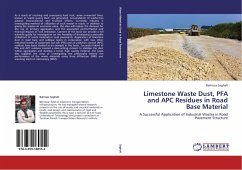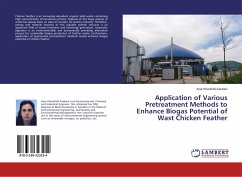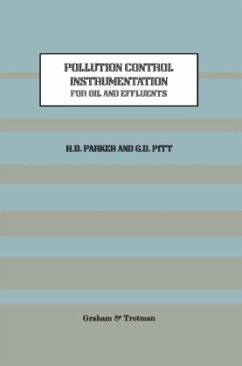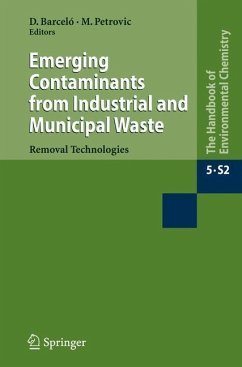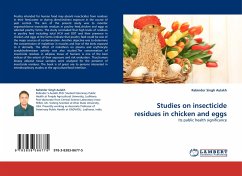
Studies on insecticide residues in chicken and eggs
Its public health significance
Versandkostenfrei!
Versandfertig in 6-10 Tagen
32,99 €
inkl. MwSt.

PAYBACK Punkte
16 °P sammeln!
Poultry intended for human food may absorb insecticides from residues in their feed,water or during direct/indirect exposure in the course of pest control. The aim of the present study was to monitor organochlorine insecticide residues in poultry feed,chicken and eggs at selected poultry farms. The study concluded that high levels of residues in poultry feed including total HCH and DDT and their presence in chicken and eggs at the farms indicate that poultry feed could be one of the major sources of contamination. Another objective was to determine the concentration of malathion in muscles and...
Poultry intended for human food may absorb insecticides from residues in their feed,water or during direct/indirect exposure in the course of pest control. The aim of the present study was to monitor organochlorine insecticide residues in poultry feed,chicken and eggs at selected poultry farms. The study concluded that high levels of residues in poultry feed including total HCH and DDT and their presence in chicken and eggs at the farms indicate that poultry feed could be one of the major sources of contamination. Another objective was to determine the concentration of malathion in muscles and liver of the birds exposed to it dermally. The effect of malathion on plasma and erythrocyte acetylcholinestrase activity was also studied.The concentration of insecticide residues in adipose tissue of humans is one of the best indices of the extent of their exposure and risk evaluation. Thus,human biopsy adipose tissue samples were analyzed for the presence of insecticide residues. The book is of great use to persons interested in interdisciplinary studies at the agriculture/food interface.




